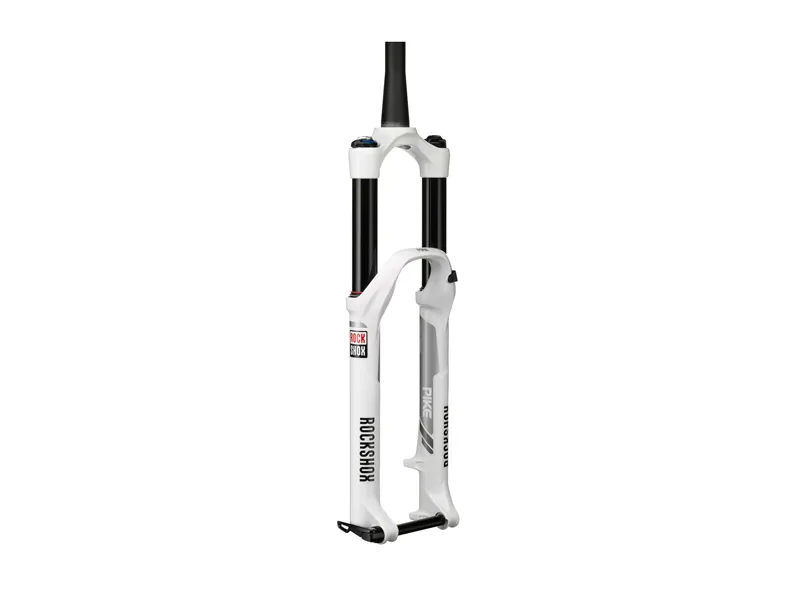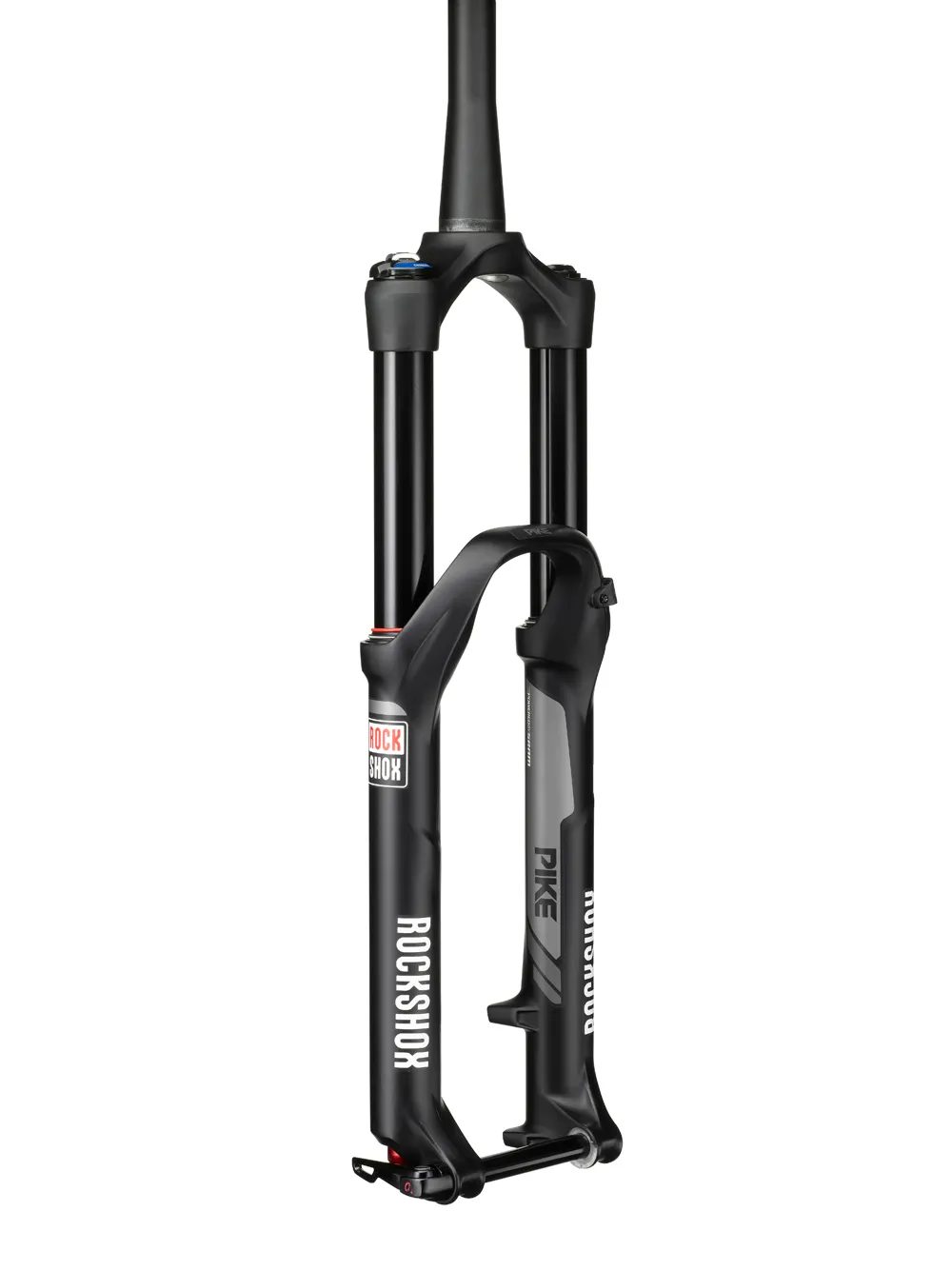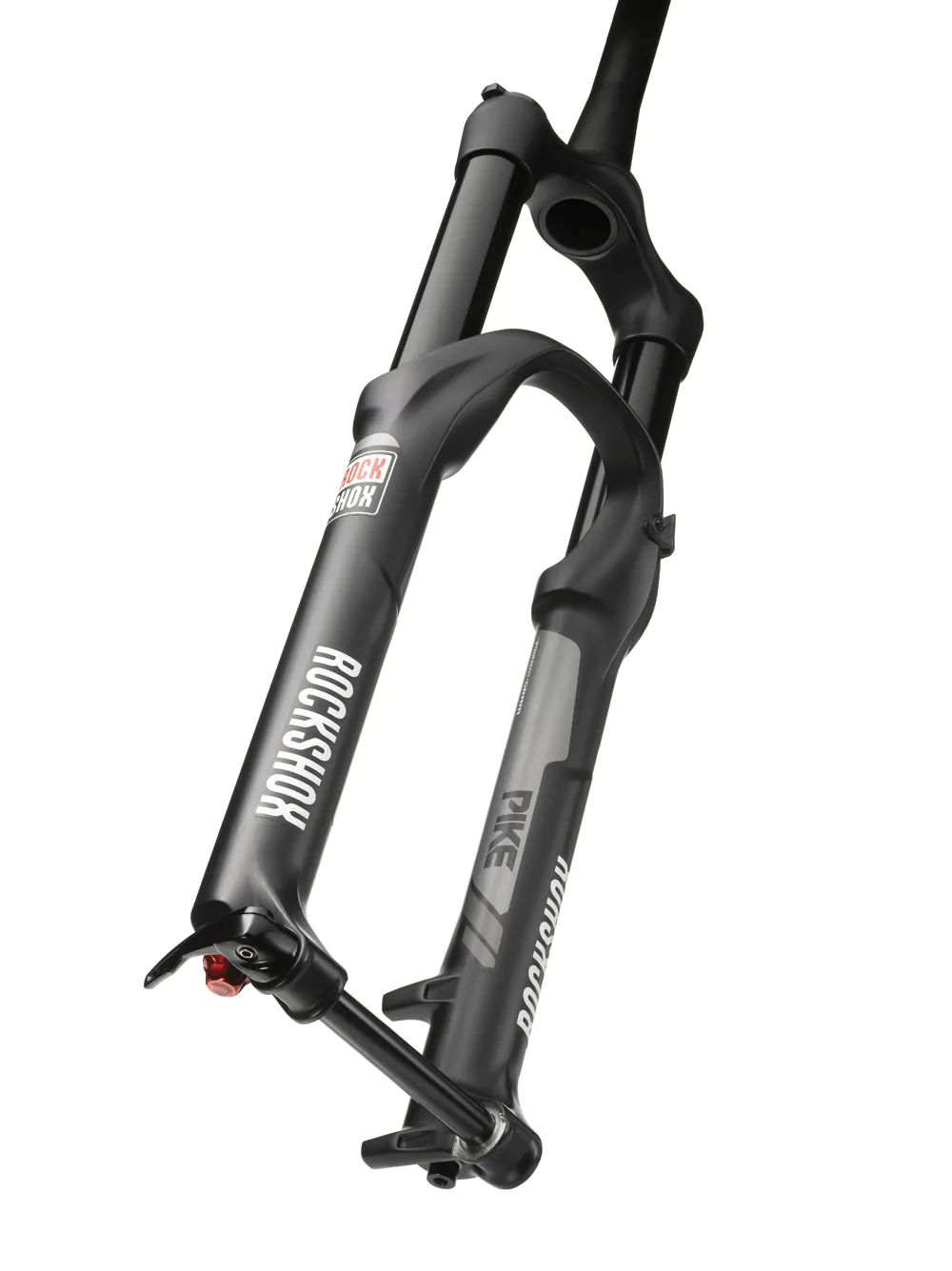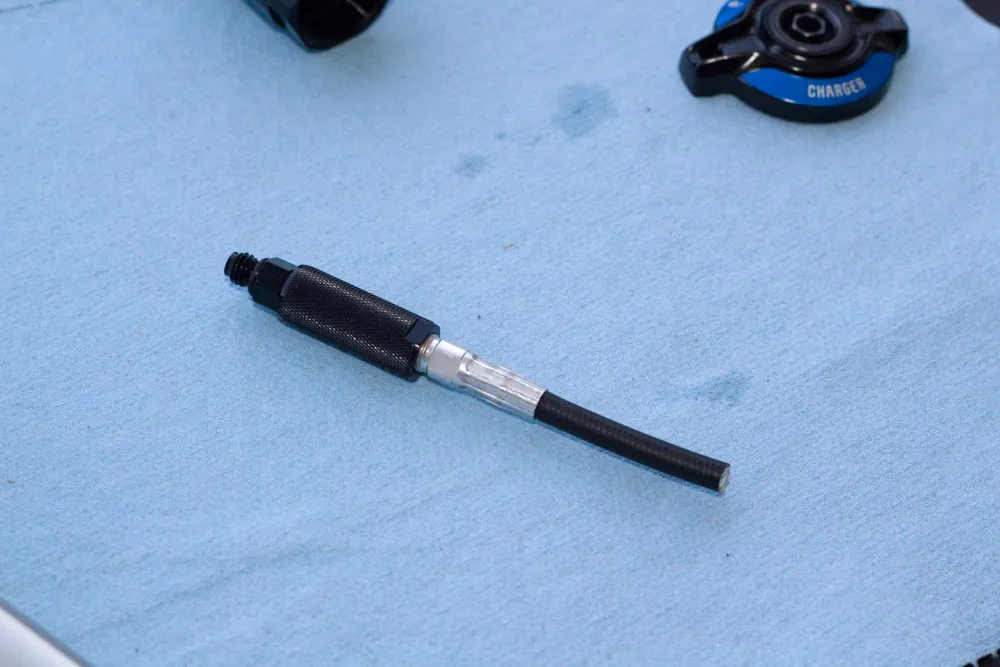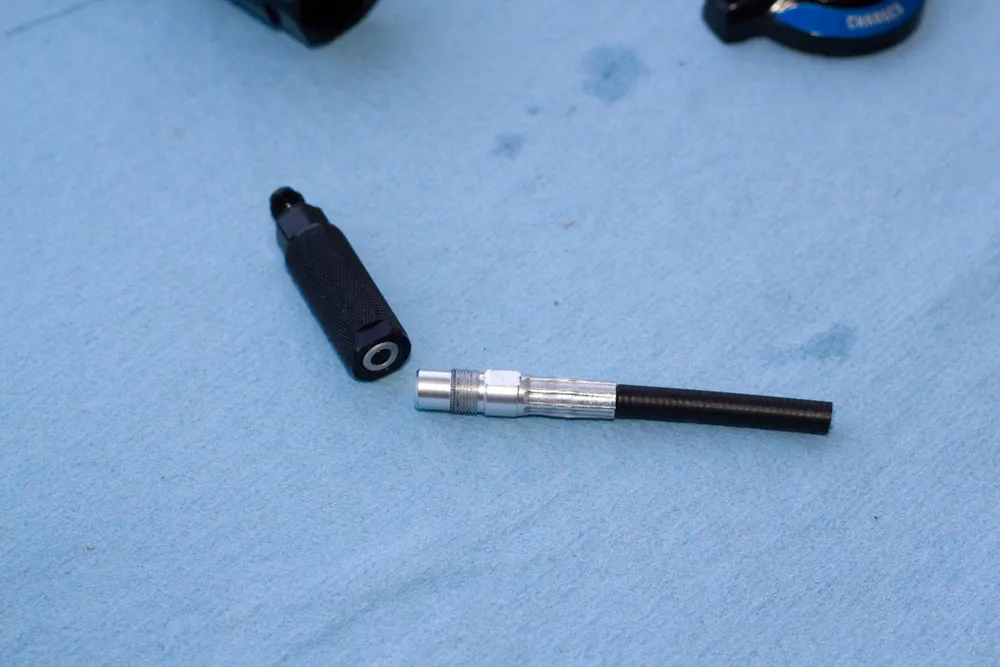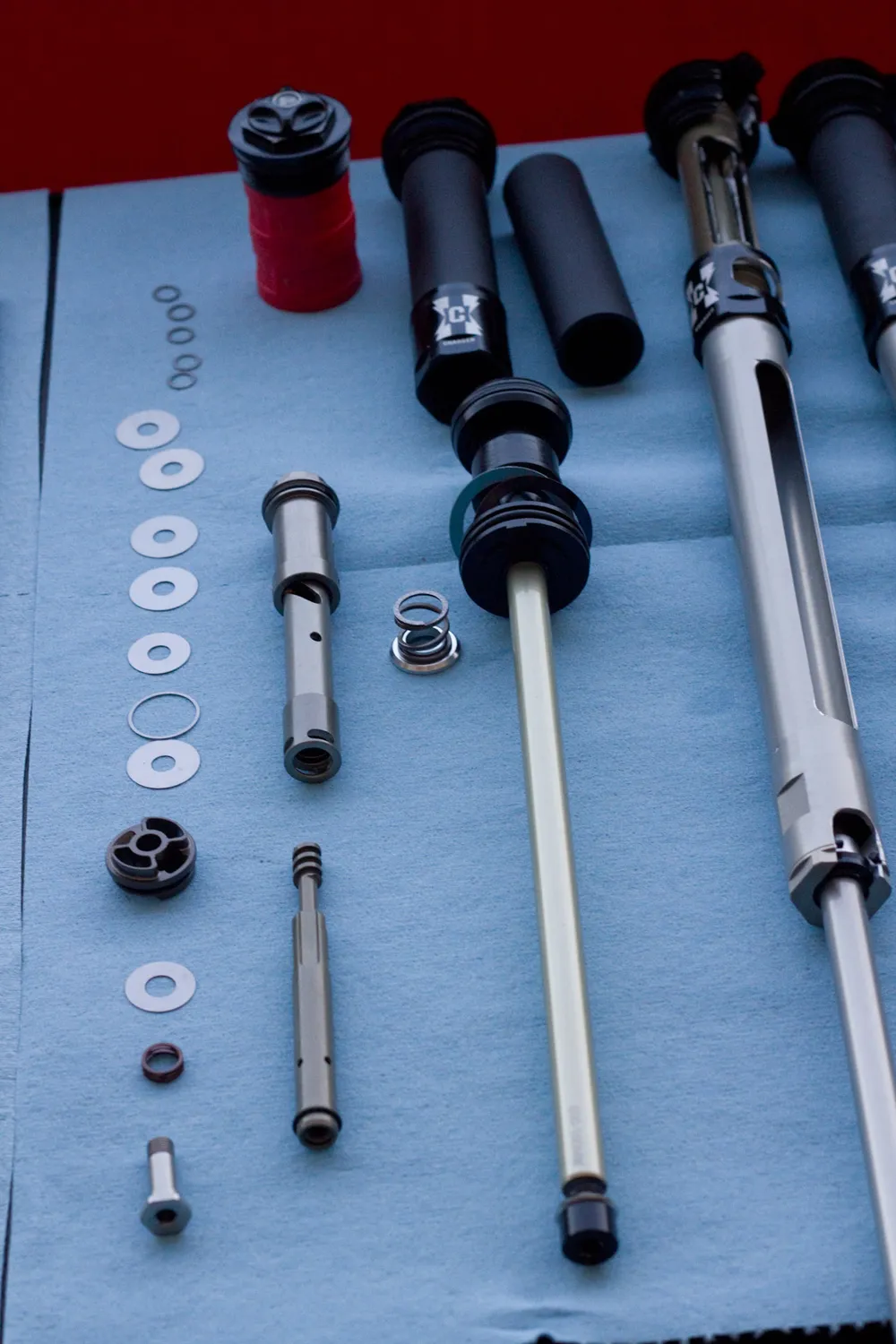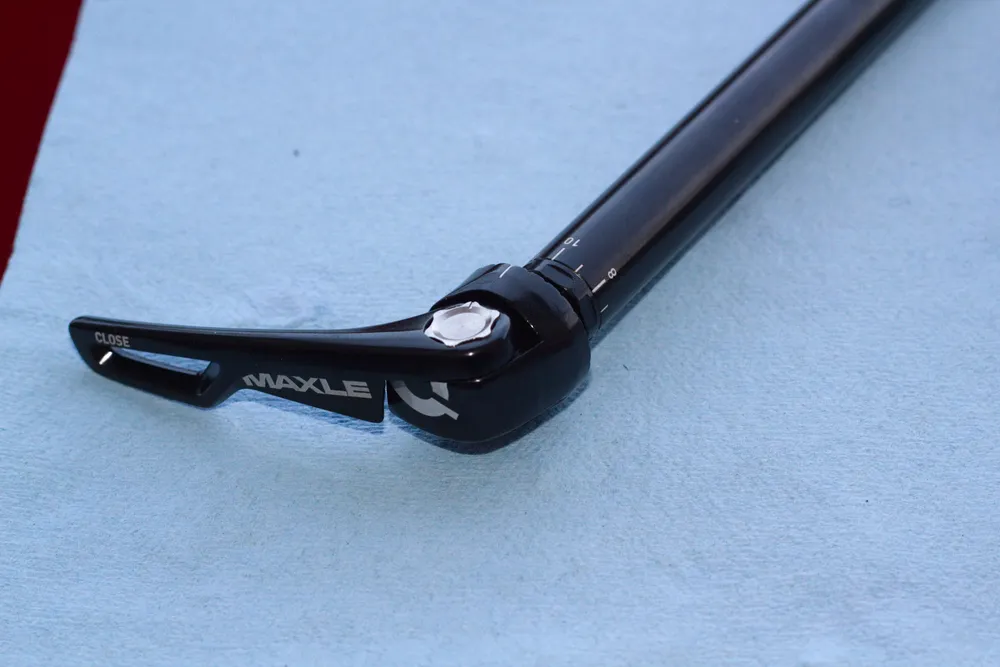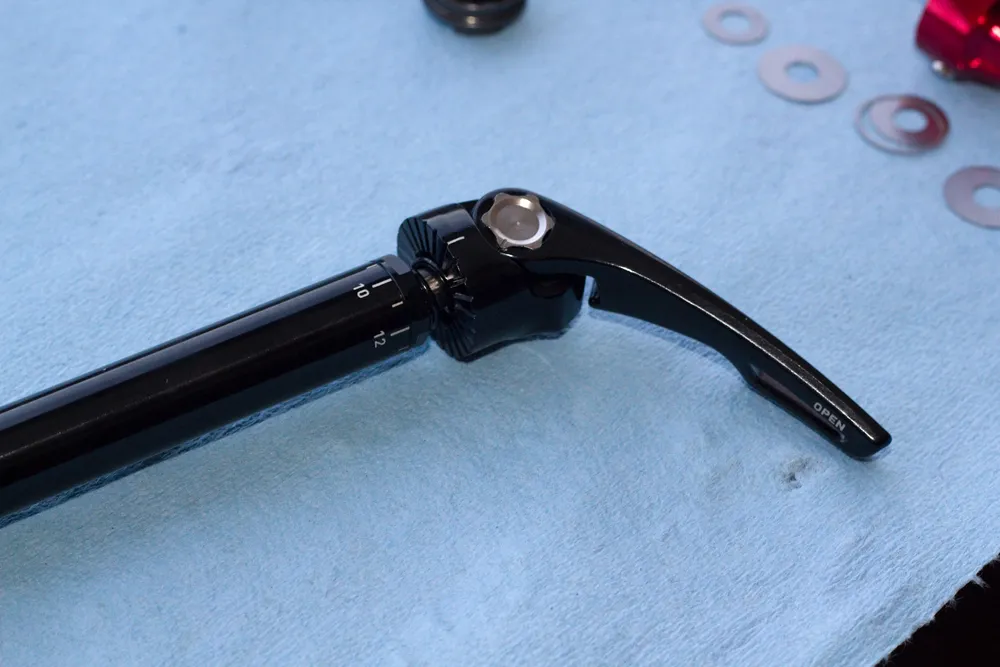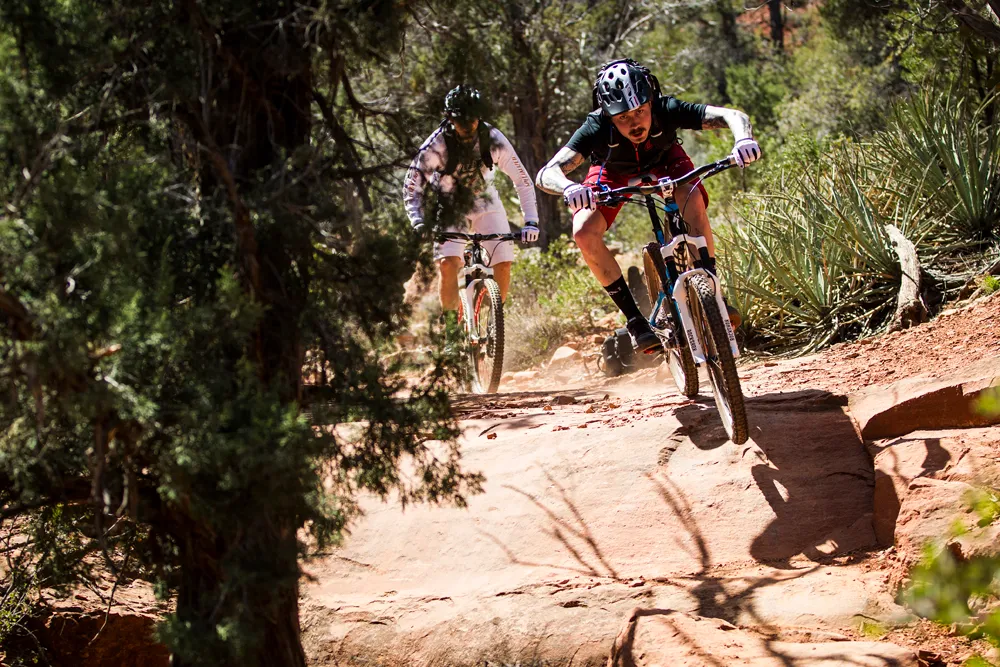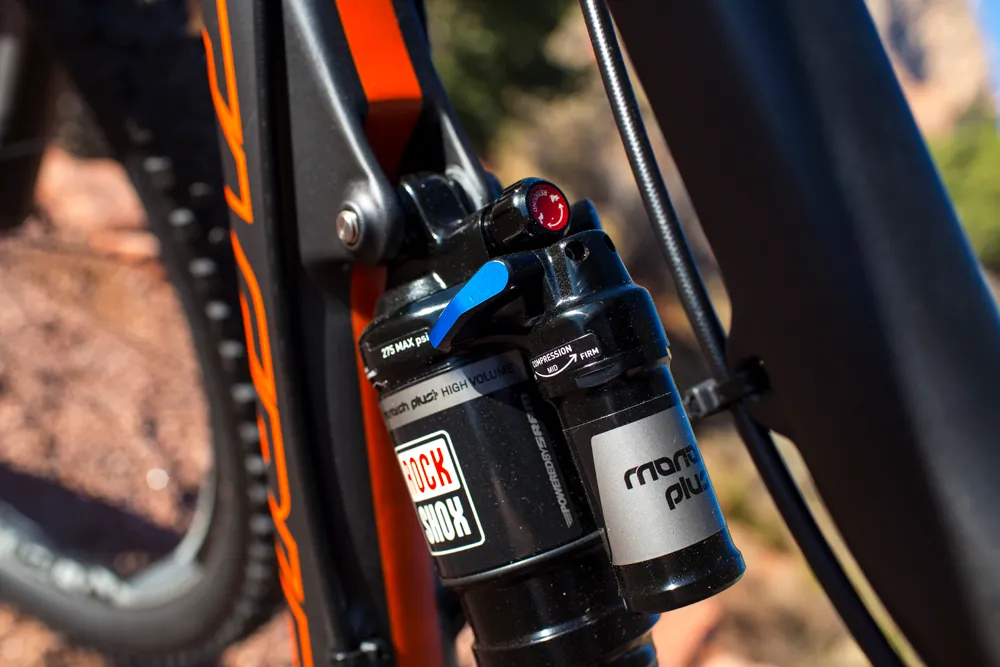For 2014 there’s little doubt that RockShox have set their sights on the hard-hitting trail bike and enduro racing market. They’re leading the charge with the resurrection of the legendary Pike fork in a lightweight, 160mm travel chassis with brand-new sealed cartridge ‘Charger’ damper, available in the full trio of wheel sizes.
The Rapid Recovery damping system seen on the Vivid Air R2C downhill shock will also be present on the fork as well as on an updated Monarch Plus rear shock, while the Maxle Lite and Reverb dropper post system all see small but significant changes.
BikeRadar headed to the red rock and dust in the desert around Sedona, Arizona, to put the new technology to the test.
RockShox Pike
The original Pike fork was launched way back in 2005, and with its combination of 140mm travel and stiff 20mm thru-axle it won over many riders with a blend of tracking precision and all-mountain, hard riding capability without an excess of weight; a blueprint for almost all mountain and trail forks that followed.
The 2014 model is a long cry from the early fork. The reincarnated Pike will be available in 26, 27.5 and 29in chassis versions, all sporting up to 160mm of travel from the 35mm diameter upper legs.
RockShox hadn’t planned to create a 160mm travel 29er fork, but with potential demand on bikes such as the recently-released 155mm travel Specialized Enduro 29 it doesn’t take a genius to see who this fork is gunning at. Weighing a claimed 1,838g for the 160mm, 26in Solo Air model, it’s a significant 100g or so lighter than the similarly pitched Fox 34 Float CTD.
The all-new rockshox pike
The 160mm model is joined by a 150mm option, with Solo Air or travel adjustable Dual Position Air spring versions. A 29er-only 140mm Solo Air sprung model will also be available. The forks cannot be user-modified to shorter or longer travel settings.
The 2014 Pike has been designed specifically around a tapered steerer and 15mm thru-axle. Excising choice from the equation has allowed RockShox to focus on minimising weight.
That’s been achieved by making the lower leg casting shorter on the non-spring driveside leg, where the extra internal volume isn’t required. The externally butted ‘Power Bulge’ that helps support the bushing area also extends only 40mm down, while on the more highly stressed disc side it extends all the way down to the brake mount.
The seals have been changed to reduce breakaway friction, moving to a single lip seal while slotted (instead of solid) bushings allow oil to circulate and keep things lubricated.
Despite outward similarities to the DLC and Black Gold extra-slippery coatings seen on various pro riders’ BlackBox development forks, the black finish on the upper legs is a purely cosmetic anodising. According to RockShoxproduct manager Jeremy Boobar the DLC (diamond-like carbon) coating used on BlackBox forks proved too inconsistent for mass production. The useful anodised sag gradients aid simple setup and there’s a choice of white painted crown and lower legs in addition to all black.
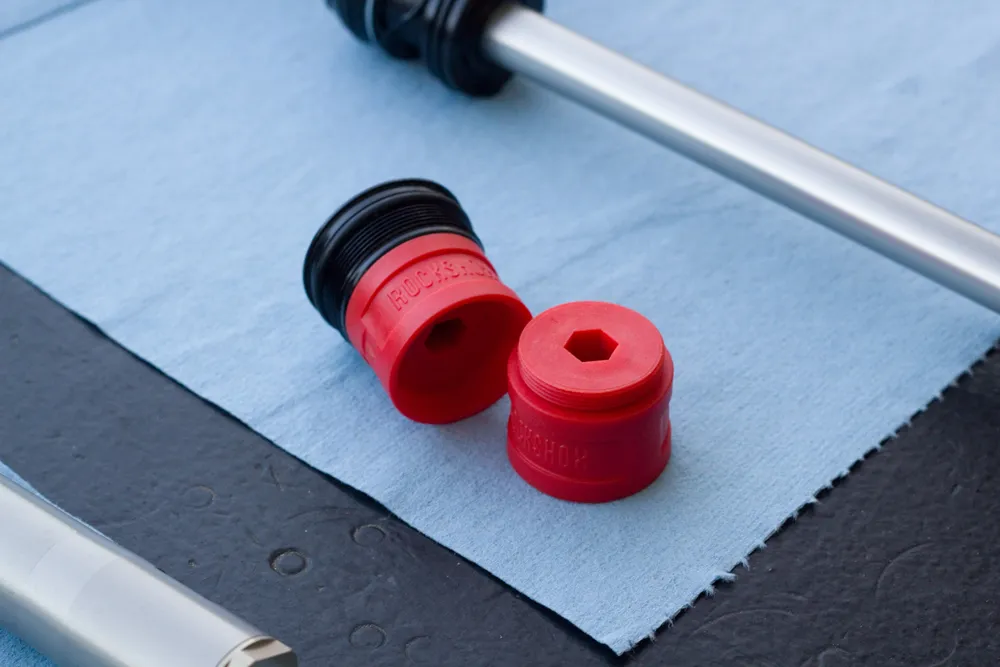
The Pike can be made more progressive with 'Bottomless Token' spacers
The Pike fork will be available from May and will cost from US$980 to US$1,085 (£779.99 to £849.99 or €878 to €949) depending on exact model.
New Charger damper with Rapid Recovery
The fork also debuts with the all-new Charger damper. The new sealed cartridge design uses an extruded bladder filled with 3wt oil that expands to contain the oil displaced by the fork as it moves through its travel. The design helps keep damping consistent by ensuring that no air mixes with the oil, even during rough and rapid descents.
RockShox senior design engineer Damon Gilbert notes that the extruded design of the bladder results in consistent wall thickness, with no seams that could act as weak points. Gilbert said the service interval for the Charger damper is approximately 200 hours and the bleed process can be done in less than five minutes.
The Charger damper is available in RCT3 and RC models. The RCT3 offers Pedal and Lock efficiency settings, with an Open setting working on a separate damping circuit with independent low-speed compression adjustment. The simpler RC damper makes do with low-speed compression adjustment with Lock setting.
While some might draw parallels with Fox’s CTD system, RockShox say they prefer to give the rider the option to adjust the feel of the fully open setting with separate low-speed damping adjustment, while having defined and fixed settings for pedalling performance. They accept that it’s possibly not as easy for novice riders to grasp how to tune the fork, but aim to work directly with consumers.
All-new charger damper
RockShox plan to use social media and the internet to inform consumers on how to tweak their settings. They will also be using the five SRAM Technical Universities in Europe, the United States and Australia to help give dealers the requisite knowledge and setup skills.
Both versions of the Charger damper feature the Rapid Recovery rebound damping technology first seen on the 2012 Monarch RT3 rear shock. The system aims to keep the fork riding higher in its travel, preventing packing down on successive bumps. This is achieved by using the Dual Flow rebound system, which has separate, adjustable beginning stroke and fixed rate ending stroke rebound damping circuits.
Although this technology has been on the RockShox product line for a while, Rapid Recovery uses a faster rate ending stroke rebound that has a set ‘blow off’ point (or more correctly, a digressive damping profile), allowing it to quickly re-extend in readiness for the next bump. A slower-than-usual beginning stroke rebound rate prevents an uncontrolled bucking feeling as the fork extends back to full travel.
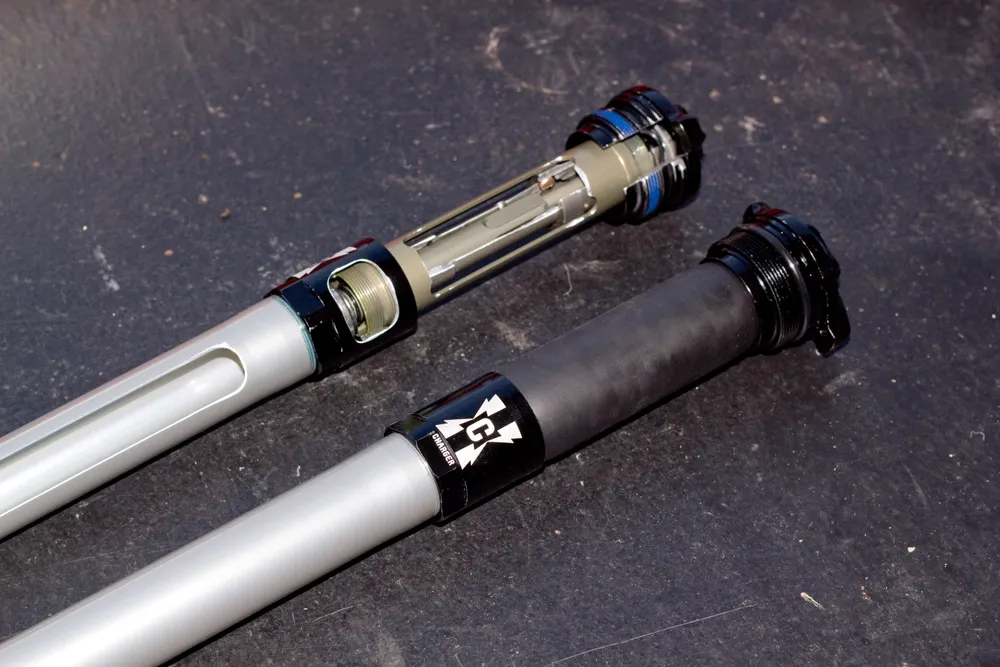
The new Charger damper uses a rubber bladder
On the spring side, the spring rate of the fork can be made more progressive by adding in ‘Bottomless Tokens’ – plastic spacers that fix to the air spring cap to reduce the air volume and aid the air spring’s natural ramp up towards the end of the travel. They can be threaded together to allow additional fine tuning.
While the same result can be achieved by adding additional oil, it’s a simple, light and fuss-free way for anyone with fairly basic spanner skills to fine-tune the feel of the fork.
Maxle Lite updated
The quick-release, thru-axle Maxle Lite system has also undergone significant changes. Instead of fixing the axle in place by expanding at either end when closed, the new design uses a clamping action to secure it while the open lever cam is now enclosed.
These changes mean it should be less sensitive to dirt clogging the mechanism. The lever closure angle can be adjusted without tools, simply by depressing the lever and aligning anodised marks to the required position.
Monarch Plus
The Monarch Plus shock has been well received among enduro and all-mountain riders, offering a combination of light weight from the Solo Air spring and hard-hitting descending performance from the self-correcting anti-fade damper, which shares much in common with the Vivid Air downhill shock.
Updated rockshox monarch plus rear shock
For 2014 the shock gains the Rapid Recovery rebound system thanks to the damping shaft diameter moving from 9 to 10mm, meeting the system’s need for greater oil flow.
The shock is also capable of running a broader range of pressures to cope with a wider variety of frame designs. The range of rebound adjustment has been doubled from 100lb (45kg) to 200lb (91kg) of difference, in addition to a greater compression flow rate.
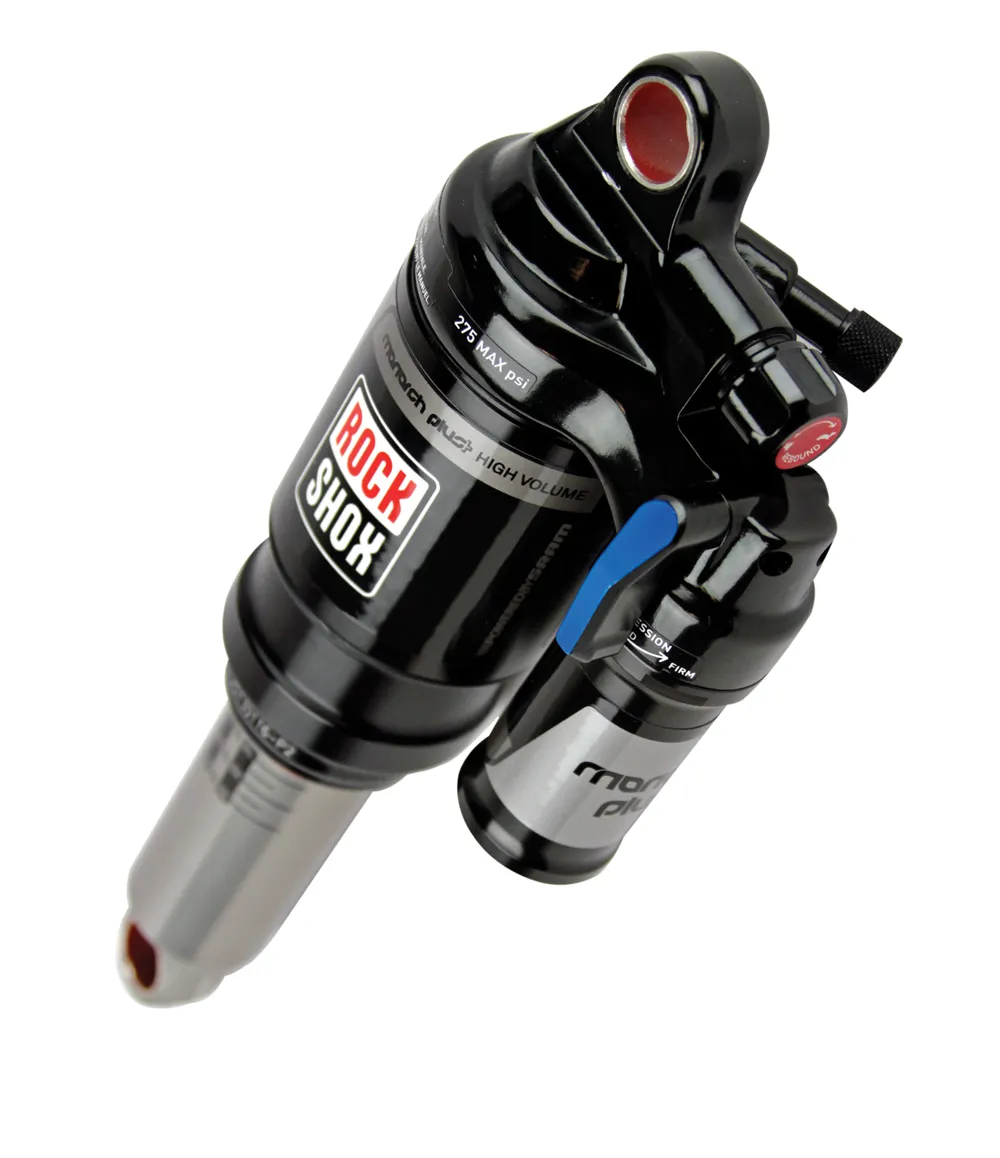
2014 RockShox Monarch Plus
The rebound adjuster itself has been updated and the air valve has switched sides and gone low profile, giving greater clearance and meaning the three-position, low-speed compression adjustment lever is more accessible. An increased negative air spring volume means that the initial third of the travel is now more supple than before.
The Monarch Plus shock will cost US$486 (£349.99/€435) when it becomes available in June 2013.
Riding impressions
Under the baking Sedona sun, on a tricked-out, XX1-equipped Santa Cruz Tallboy LTc, it became immediately obvious that the Pike is a much stiffer and more direct affair than any previous RockShox 29er fork. It is more than a match for its rivals.
The secondary impression is that sensitivity is massively improved too, with the new negative spring giving the Monarch Plus shock a much more supple feel than previous models.
To help support the bike through corners and keep a spring in its step, we quickly settled on running the fork open, with a fair helping of low-speed compression, and the rear shock in the mid compression setting.
We left the fork pretty much alone after that – the Pedal setting significantly increases how firm the ride is and there was little in the way of smooth climbing where there was any advantage over the supportive yet supple Open setting.
However, it became quickly apparent that the rebound settings we’d chosen based on previous experience were way out, instantly pinballing us all over the place as soon as we hit any compressions.
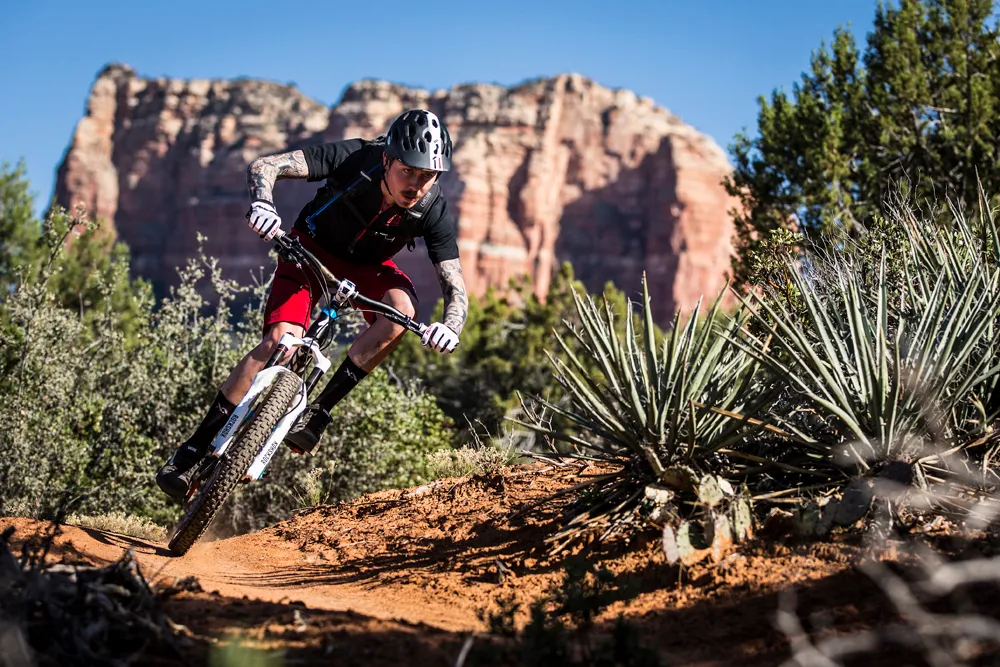
DH expert Duncan Riffle keeps it pinned in Sedona, Arizona
The Rapid Recovery rebound damping means that the initial ‘bounce test’ feel is slower than you’d expect, and we’d set it to feel like what we would normally expect.
RockShox recommend that a good starting point is to set the shock two clicks slower than what you think it should be and, uncannily, that provided us with a setting that was spot on.
Fully set up, we got stuck into the mix of explosive sharp climbs, high-speed dust drifting and insanely grippy-but-rough rock riding the area is famous for.
What impressed us most was the resistance demonstrated by both fork and shock to blowing through travel. This is something that Rapid Recovery plays a large part in, as RockShox product manager Jeremiah Boobar later explained:
“If you take a really rough and rocky section of trail and ride back-to-back using one shock with Rapid Recovery and one without – which we have done many times during development – you will notice that you use less travel and the shock feels softer with the Rapid Recovery unit.
Both units had an uncanny ability to cope with smaller-sized rocky trail chatter while reserving the skill to cope with high G cornering and repeated heavy hits. All without wallowing about in the middle of the travel, particularly mid-corner.
Rapid Recovery provides the snap and pop out of corners and off lips that a running rapid rebound gives, without the uncontrolled big hit manners such a setup would display.
The Rapid Recovery endows an almost schizophrenic ability to use the right amount of travel at the right place and maintain a lively, fun and fast feel. Add in the fact that the Pike can easily increase or decrease how progressive the spring is and it’s a fork that will suit a vast number of riders and styles, from average trail riders to serious enduro racers.

Many Monarch Plus niggles have been addressed
The Monarch Plus was significantly quieter, with a less choked feeling on rapid, hard hits. Even our long-legged 29er Pike was made conspicuous by the absence of any twang or flex no matter how hard we pushed.
To say that we’re keen to spend more time on home trails giving the new fork and shock a more complete long term test is an understatement. The fork has the potential to be a serious rival to anything currently available. The Monarch Plus has brushed up its manners and genuinely delivers on the promise of downhill shock performance at trail bike weight. Both products are well on target for a segment of the mountain biking world that looks set to grow.
We will be interested to see how well the Pike copes with a liberal dousing of wet mud and grit, rather than the less aggressive dusty, dry conditions in Sedona. But the lack of oil mixed with the dust on the fork legs after a hard couple of days is a good sign.
RockShox Reverb
The success of their Reverb adjustable seatpost is something that has taken SRAM by surprise, as RockShox Product Manager Jeremiah Boobar explains: “We knew we were creating a great product from early on, but the uptake of it was bigger than we had anticipated. From a purely sales standpoint it blew past our forecast pretty quickly.”
We’d bet that its popularity continues with the addition of a 150mm travel option. That will be available only as a Stealth model for the 31.6mm and new 34.9mm diameter posts.
Connectamajig
Of interest to anyone with an internal hose routing will be the new ‘Connectamajig’ threaded hose coupler, which allows the hydraulic remote hose to be disconnected and reconnected about three times before the system needs bleeding.
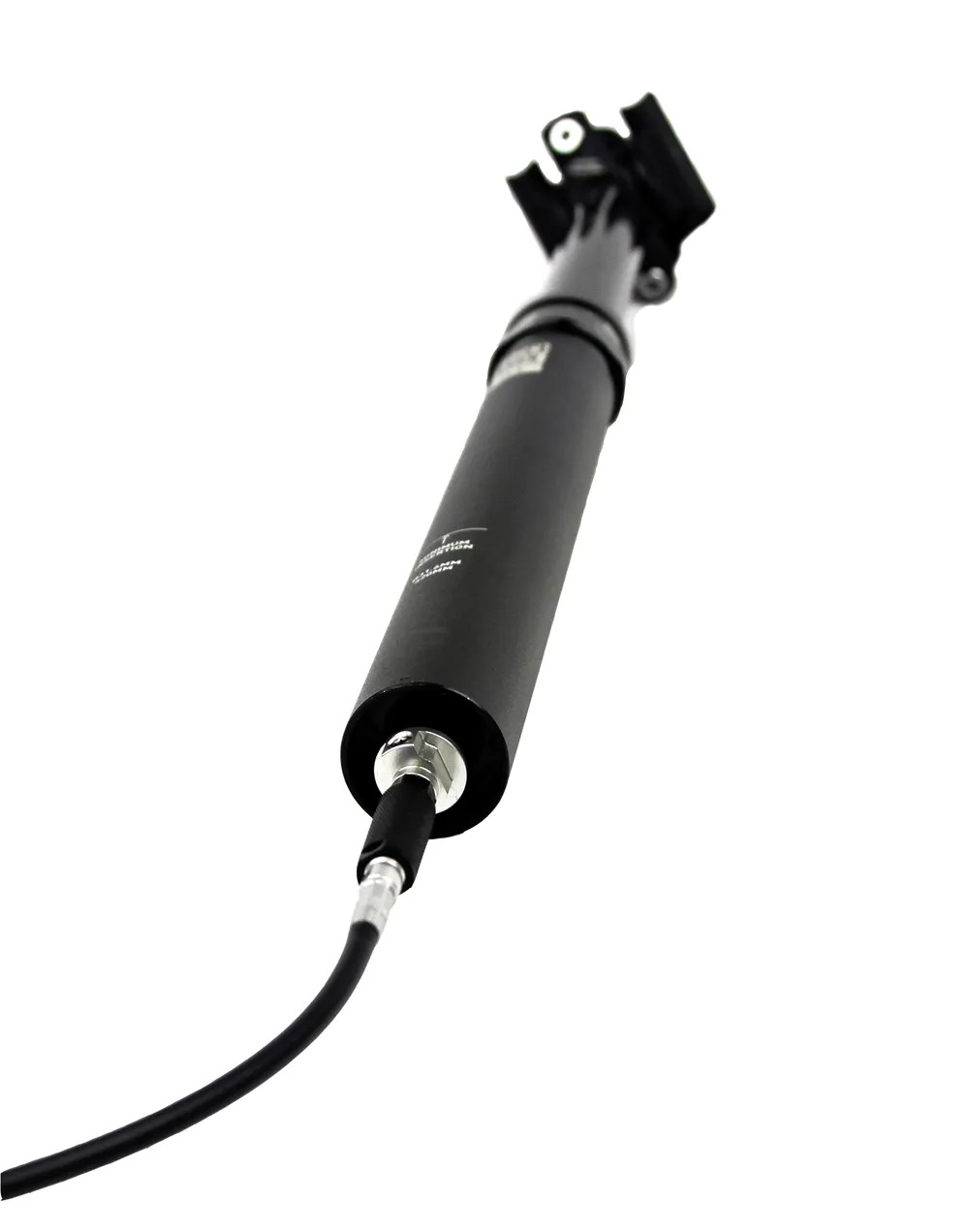
The RockShox Reverb gets a 150mm option and Connectamajig hose
It’s mostly aimed at making Stealth posts easier to fit when bikes are being assembled at a factory, but there’s no denying it will be a useful feature in many other circumstances.
The new options will be available from mid April and will cost US$455 (£299.99/€411).
For more information on RockShox products see www.sram.com.
